
7 Best Dog Brush Picks of 2020 | Reviews and Recommendations
Brushing your dog is way more important than just making him or her look like a movie star! When you bathe, comb and brush your dog, you get down to the skin, the largest organ of the body, and you can learn a lot about your dog’s overall wellness. That's why you have to pick the best dog brush for your pup.
As the brush bristles spread your dog’s fur, they may reveal a rash, cut, scrape, fleas, ticks, or burrs. You may suddenly discover a bruise, lump or bump that you didn’t notice before when you groom your dog. This is one of the reasons why you should pick the best dog brush on the market and use it for the health and looks of your furry friend.
Brushstrokes massage the skin, stimulating glands, and distributing oil throughout the coat. Brushing your canine pal is much more than cosmetic, it is part of your dog’s daily health care.
To help you choose the best dog brush, my little buddy (Well, maybe not so little to many of you, weighing in at 76 lbs., but one of the smallest canine pals to ever own me!), Haiku and his friends took it upon themselves to try out 7 of the best dog brushes in 2020.
For each dog brushed, humans took a look at the fur to determine which tools were most appropriate to use and review since different types of brushes perform different tasks, and many are designed for specific coat types.
How to Choose the Best Dog Brush for Your Pup
The best dog grooming brush for daily care on most fur types is the Bristle brush, which loosens debris and leaves a shine, but as our reviewers learned, the thickness of your dog’s coat will determine the right kind of bristles (soft or firm) and how close together they should be spaced. Short-coated Chihuahuas, Pit bulls, and Greyhounds benefit most from a brush with medium-to-soft, short bristles spaced closely together. Dogs with short, curly or wiry coats (Terriers, for instance) benefit from firmer bristles.
A Wire Pin brush is the best dog brush for medium to long-coated pooches. Generally oval or round, wire pin bristles should be coated with plastic or rubber tips, or made of a material that won’t scratch the skin. Coarse outer coats and thick undercoats (Sheepdogs and Shepherds) benefit from longer, widely-spaced bristles or pins.
Slicker brushes have flat or curved heads with rows of thin wire pins that remove loose fur and detangle, giving a smoother, shinier appearance. A longer, more flowy coat, like the one belonging to a Lhasa Apso, Golden retriever, or Chow-Chow such as Haiku, should have wider spaced bristles to get through without pulling and to help detangle knots.
For those dogs who shed profusely, or shed mostly undercoat, an Undercoat rake, with fewer bristles, gets deep into heavy coats to remove dead fur before it mats or to pull out mats that have already formed.
No matter how rare your dog is, no matter if it is an expensive breed or you adopted it, your dog needs the best of care and dog brushes are the way to start, especially if you are new to sharing your life with a pup.
20 Hypoallergenic Dog Breeds You Can Cuddle with Worry-Free - If you love dogs and you want to get one but you're allergic, check out these 20 hypoallergenic dog breeds you can choose from.
Here is how our selection of the 7 Best Dog Brush options in 2020 worked for our canine test subjects. We took into consideration not only how well their coats looked afterward but noticed if the brushes pulled fur, scratched skin, and delighted or bothered the dog getting brushed.
7. Furry Fido, Wooden Design, Effective Grooming Tool
- Removed significant hair on some breeds
- Can gently remove hair from sofa cushions
- May cut top coat when getting to undercoat
- Quite expensive
Mary Beth felt the Furry Fido Grooming Tool didn’t work as well on Magnus’ coat as other brushes she tried. It felt sharp for her dog’s shorter fur, so she was careful to take slow and gentle strokes when testing it out.
Magnus was uncomfortable with this brush but it seems to work better on breeds with a much thicker undercoat. Brady, the black Labrador retriever, gave it a try as well and was left with a smooth, shiny coat! The product should be better labeled for specific fur types.
6. Glendan Slicker Dog Brush
- Hair cleans easily out of brush
- Inexpensive
- Cute dog bone design
- Pulled on dense thick coat
- Didn’t reach through undercoat tangles
- Need to cover bristles “for safety”
Haiku, a senior fluff ball, tried out the Glendan Slicker Dog Brush. I was taken aback by the mention on the packaging stating, “For safety reasons, keep the protective cover on the brush.” As you read above, for a senior dog (and any other pet for that matter ), a big concern is making sure that bristles aren’t sharp enough to puncture or scratch the skin.
Although not an indication as to the quality of the brush, I noticed a typo on the packaging, which is a personal pet peeve. Taking time to make sure labeling is impeccable is a presentation of the brand.
As for the brush test, I worked the bristles tentatively through Haiku’s coat to make sure they didn’t scratch, but the pins did pull and were difficult to pull through his fur. The package was not labeled for any specific coat type, but I’m sure it would do a much better job on shorter-coated breeds.
5. Go Pets Double-sided Pin & Bristle Brush
- Rounded tips made pin side comfortable
- Non-slip handle conforms to your hand
- Good if you have two different coated pets
- Portion of profits donated to animal charity
- Although brush appears to knock loose fur from short-coated breeds, it quickly clogs
- Expensive
Curly Kali was game for a brush test, so Summer tried out the Go Pets Double-sided Pin & Bristle Brush. The pin side went through Kali’s coat removing some hair but the bristle brush side was just too soft to do anything.
It seems it would be the best dog brush for short hair – namely a super short-coated dog, maybe a Pitbull or Greyhound, where the bristles could effectively reach and massage the skin, stimulating circulation and oil glands. Would do best being labeled for certain coat types but could be used if you have two different dog breeds in your household.
4. Vets Pride 2-in-1 Deshedding Comb & Undercoat Rake
- Dog enjoys, feels like a massage
- Removes dead fur
- Comfortable handle
- On the expensive side
Next on our list of best dog brushes was one marketed as the best dog brush for shedding by some users. So, Magnus, the ever-shedding Boxador (Boxer-Labrador mix) and his mom, Mary Beth, tested out the Vets Pride 2-in-1 Deshedding Comb & Undercoat Rake, and Magnus really seemed to like it! At 11-years old, Magnus has earned the chance to enjoy a good nap in the yard but retains enough puppyness to still chase squirrels.
Apparently, Mags enjoys being massaged and brushed too. Mary Beth was pleased with how much fur the Vets Pride tool removed from her handsome boy. The brush has two sides allowing you to stroke against fur growth with one, loosening dead fur, and then smoothing out the coat with the other side. We think Magnus looks great after his brushing!
3. Pat Your Pet Two-Sided Undercoat Rake
- Two sides for tough and not-as-tough mats
- Broke through mats, removed dead fur
- Can pull burrs & debris, but hold fur firmly so it won’t pull your dog
- Costly but accomplishes the mission
- Looks intimidating but patience is key
Morning walks in the Southeast can be wet! Dew, sprinklers, and rainstorms contribute to wet grass and bushes which my furry buddy loves to bore into to partake in the smells nature has to offer.
In particular, his “cotton candy” flyaway undercoat on his “leggings and pants” quickly mats when water soaks fur. In his younger years, he loved being brushed, but now it’s become a two-person job as he no longer has the patience and tries to leave the room!
To test out the Pat Your Pet Undercoat Rake, we started with the 9-tooth side and then finished with the closer together 17-tooth de-shedder. The brush did a great job at breaking through the mats. Patience is key in dealing with mats.
In the video, you can see, however, that it tugs pretty hard at Haiku’s fur, but when I placed a hand on him, pressing on his fur just above where I was brushing to prevent the pulling, I was able to work through the mats without discomfort to my boy.
Dead fur came out, and Haiku looked great! I then polished him off with a slicker brush to give him a glossy finish!
2. Hertzko Soft Detangling Brush
- Gentle on skin, like a massage
- Removed dander, debris, and fur
- Left a nice shine to the coat
- Medium priced
- Comfortable handle grip
- Can’t think of one!
Kali, a 5-year-old Labradoodle, received her spa treatment from her lovely niece (LOL), Summer, who tested out the Hertzko Soft Detangling Brush. Kali is always in need of a good brushing because her favorite place to sleep and hangout is under the deck, in the hole she dug!
Summer felt the Hertzko brush worked great on Kali’s curly coat, getting out a lot of undercoat, and even grabbing hold of pieces of twig and dirt that had burrowed into her fur. It left Kali’s coat shiny and gorgeous, so it receives a big thumbs up, four paws up too!
1. FURminator Grooming Slicker Dog Brush
- Removed dense undercoat
- Did not pull, moved smoothly through fur
- Easy to remove fur from brush
- Inexpensive
- Comfortable to hold
- Can’t think of one!
Part Chow-Chow, part long-coat Akita, 14-years young Haiku loves to go for walks, sniffing all nature has to share and then come home for a treat! Haiku has a combination coat of dense silky fur with a “cotton candy” fly-away undercoat that tangles easily.
Being a mature boy, his skin is tender, so my goal is not only to keep his coat well-groomed but to also make sure his skin does not get punctured, scratched, or pulled on when brushing his fur. So, next in line for our quest to find the best dog brushes on the market this year was the famous Furminator brush!
Let’s just say that the FURminator® Slicker Dog Brush accomplishes it all! The stainless steel bristles were gentle on his skin yet plowed through surface mats and tangles. The slightly bent bristles on one side followed the contour of his body while the flip side created a glossy finish.
Not only was I happy to see the result of his beautifully brushed coat, but the ergonomic handle allowed me to get the job done without getting a cramp in my hands.
The 10 Best Dog Shampoos To Clean Your Pup With - Find the best dog shampoo for your pup by going through the 10 options that Haiku and his buddies tested and reviewed.
Best Dog Brushes to Get This Year: FAQs and Buying Guide
Before we conclude this guide, let’s summarize everything we have discussed here regarding the choice of the best dog brush for your dog. We will also answer some of the most frequently asked questions coming from our readers and dog lovers in general!
What are the best dog brushes on the market?
After testing and reviewing the products on this list, we came up with the following results:
- Best dog brush overall: the Furminator brush – FURminator Grooming Slicker Brush
- The best dog brush for shedding: Vet’s Pride 2-in-1 Deshedding Comb and Undercoat Rake
- Best dog brush for short hair: the Go Pets Double-sided Pin & Bristle Brush. Alternatively, just as one of our readers pointed out, you can also try the Greenbone Bamboo Pet Grooming Brush. We did not get to test it, but if you did, let us know in the comment section below, as we’d love to hear about your (and your doggo’s) experiences with it!
- The best dog grooming brush – still the FURminator Grooming Slicker Brush
2. Are double-sided brushes for dogs worth it?
If you find one of high-quality, yes, a double-sided brush for dogs is an excellent dog grooming tool that brings together the best of both worlds when it comes to health and looks. If one of the sides is a pin brush, it will help you detangle your buddy’s fur and remove fur mats. In this case, the other side should be a bristle brush for coat shine and smoothness.
3. Is it better to brush the dog when it is wet or dry?
It is better to brush your dog – no matter the types of dog brushes you use – when the fur is dry. Otherwise, the fur tangles, you will be mostly pulling mats out of the fur instead of gently removing them, and risk scratching the dog’s skin. If you want to brush the dog after a bath, let its fur dry out before you begin.
4. How often should you brush your dog’s fur?
You should brush your dog’s fur just as often as you brush your dog’s teeth (maybe not both on the same day to avoid ruining the doggo’s entire day with your grooming persistence 🙂 ): every couple of days. Besides the specific moments when you need to brush your doggo – remove hair mats or help your pet with the seasonal shedding process – your weekly brushing routine should be part of the dog’s hygiene and grooming routine.
5. How do you brush a dog that does not like brushing very much?
The dog brushing routine should always follow a basic set of rules:
- Always be gentle and patient to avoid pulling hairs or scratching the skin;
- The brushing movement should follow a down-and-out path, away from the dog’s skin;
- Always brush in the fur’s growth direction and never backward, it tends to irritate dogs and make them agitated;
- If the dog is restless, talk to it in a gentle, soothing voice, to keep it still and patient;
- If the dog does not like the brushing, give it a breather every couple of minutes, but don’t let it run away’
- Dog treats or dental chews and praise words should ensue right after the brushing is over.
Conclusion
Just like a carpenter or a plumber, brushing your dog works best when you have the right tool for the job! Examine your pet’s fur to determine if it is long, short, curly, wiry, or otherwise, and read the packaging well to make a smart choice when looking for the best dog brush to use on your pet. Hopefully, this review of the 7 Best Dog Brushes of 2019 will be a grrreat place for you to start!
Once you begin grooming your dog, make sure you are calm and not rushed. Be gentle and patient as you stroke his fur, paying attention to the skin and anything that should not be there. When brushing your dog, if you encounter tangles or mats, move the brush gently and take small sections of fur at a time.
Brushing should not be a painful experience but rather a rewarding bonding time. Remember, properly grooming your dog is important to his health, as well as his hygiene, so make sure every time you brush your dog, it is at the right time and with the best dog brush for them, so that it is an enjoyable time spent together.
DENISE FLECK is an award-winning author, animal care instructor and radio show host. She was named one of Pet Age Magazine’s “Women of Influence” for 2018, a “Most Inspiring Story” in 2017 by Voyage Atlanta Magazine and has been nominated for 6 Dog Writers Awards to be announced in early 2019.
Read more »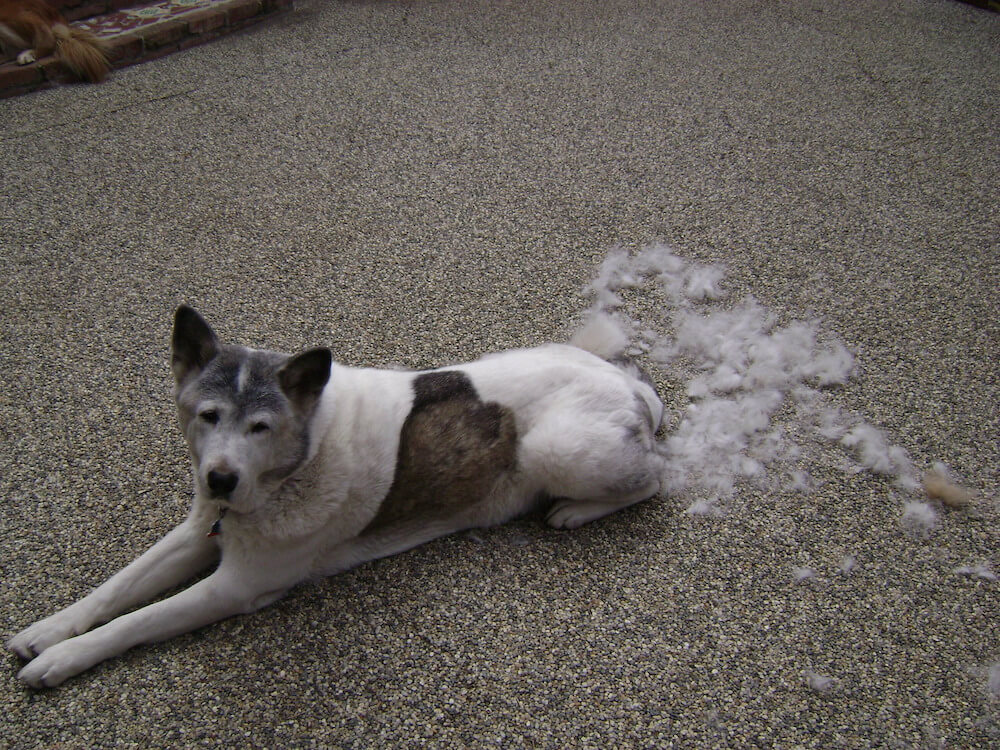
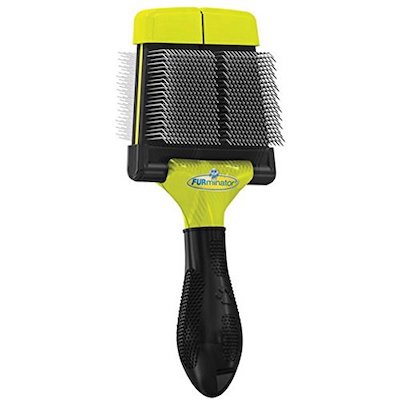

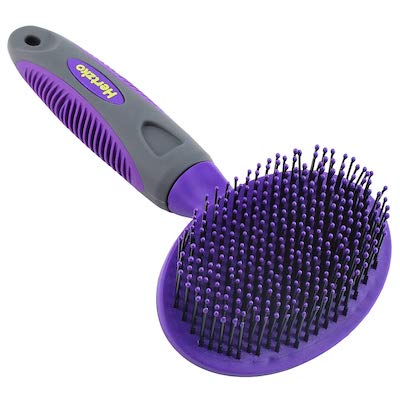
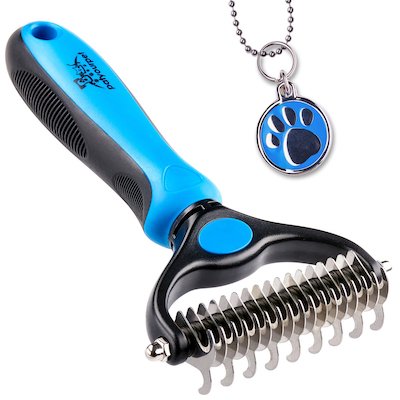

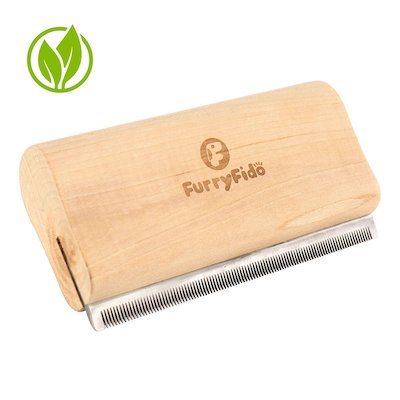
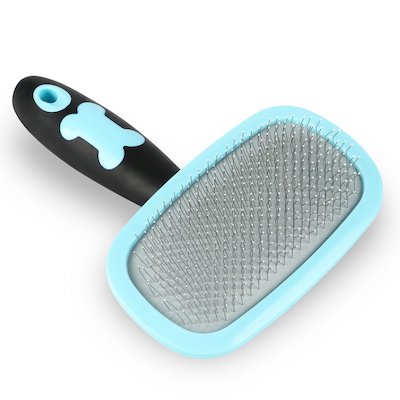

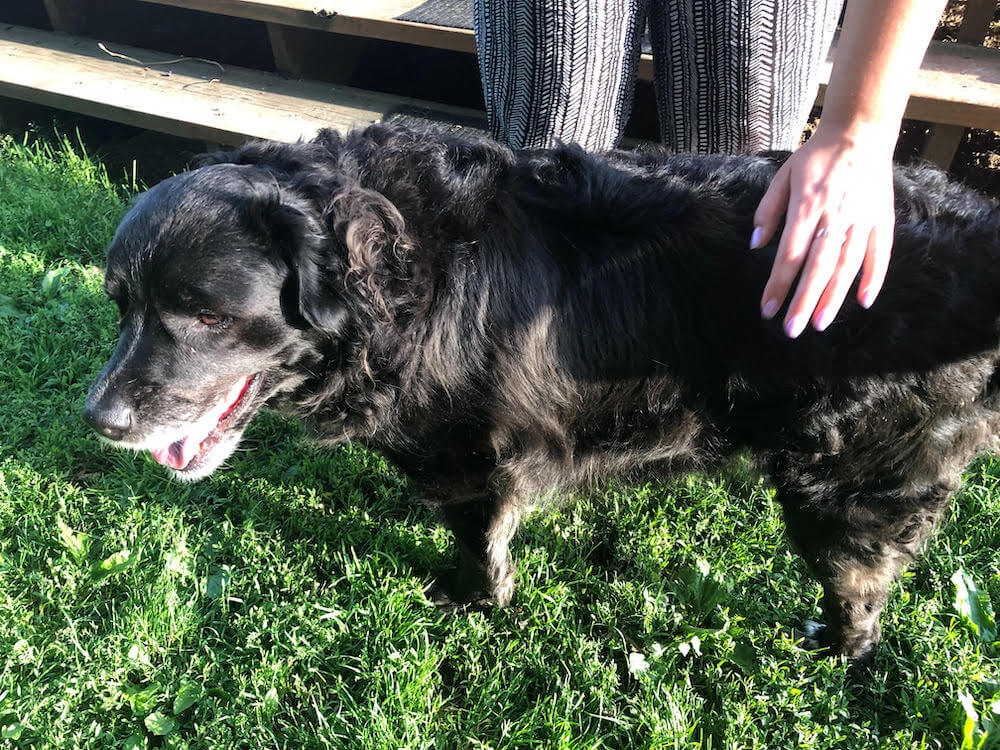
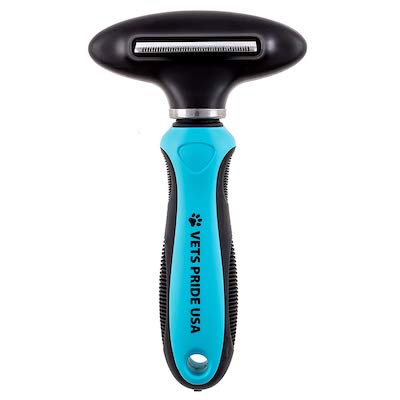
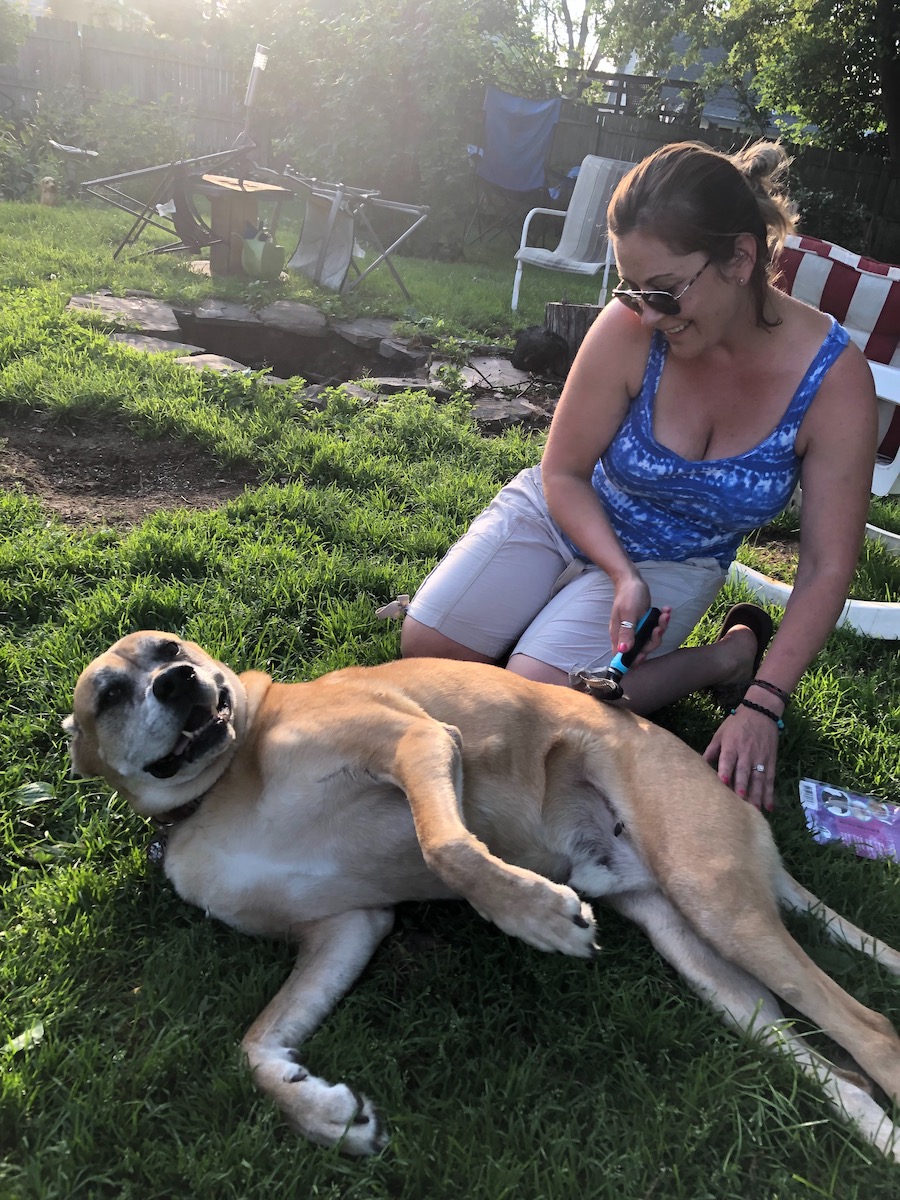
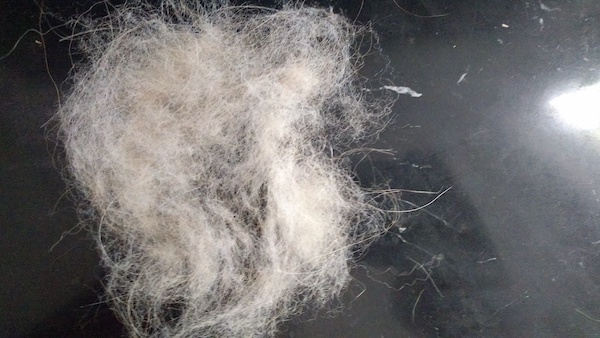
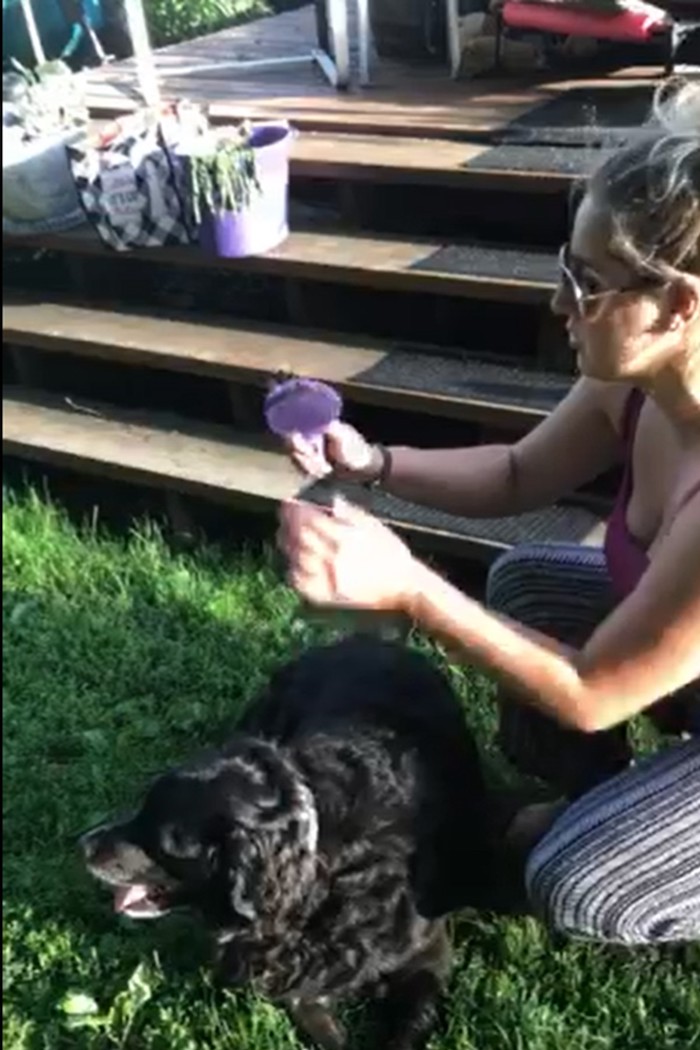
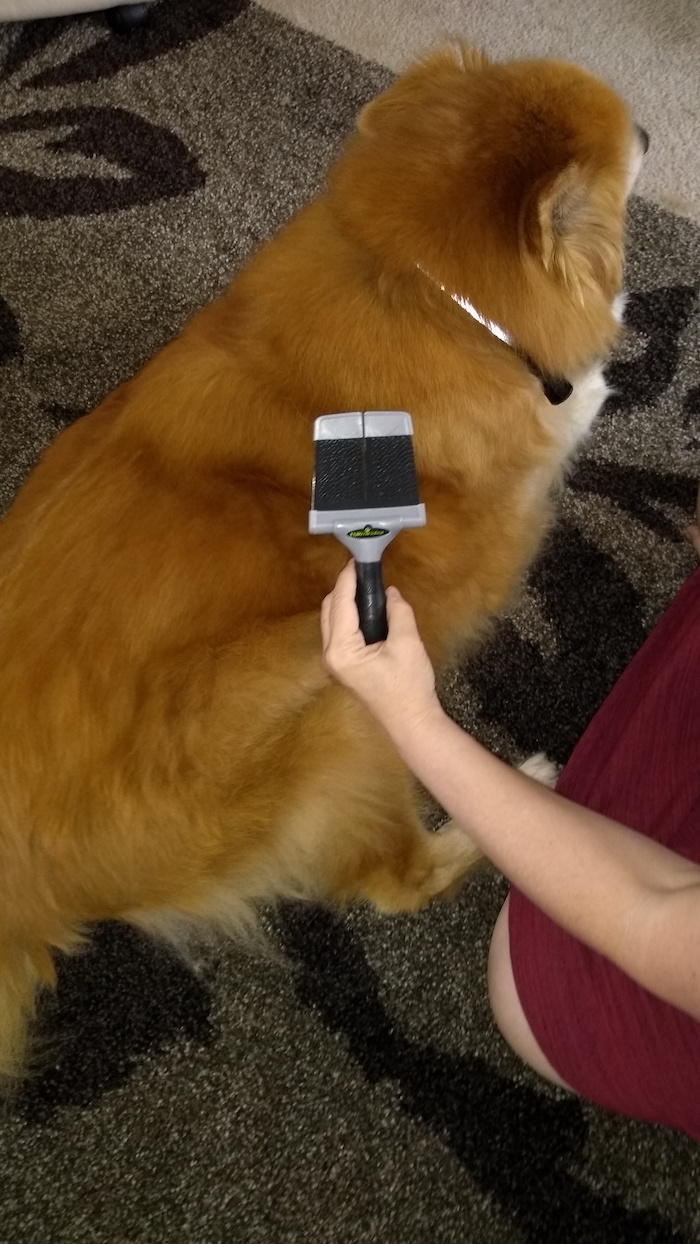
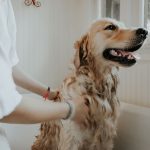
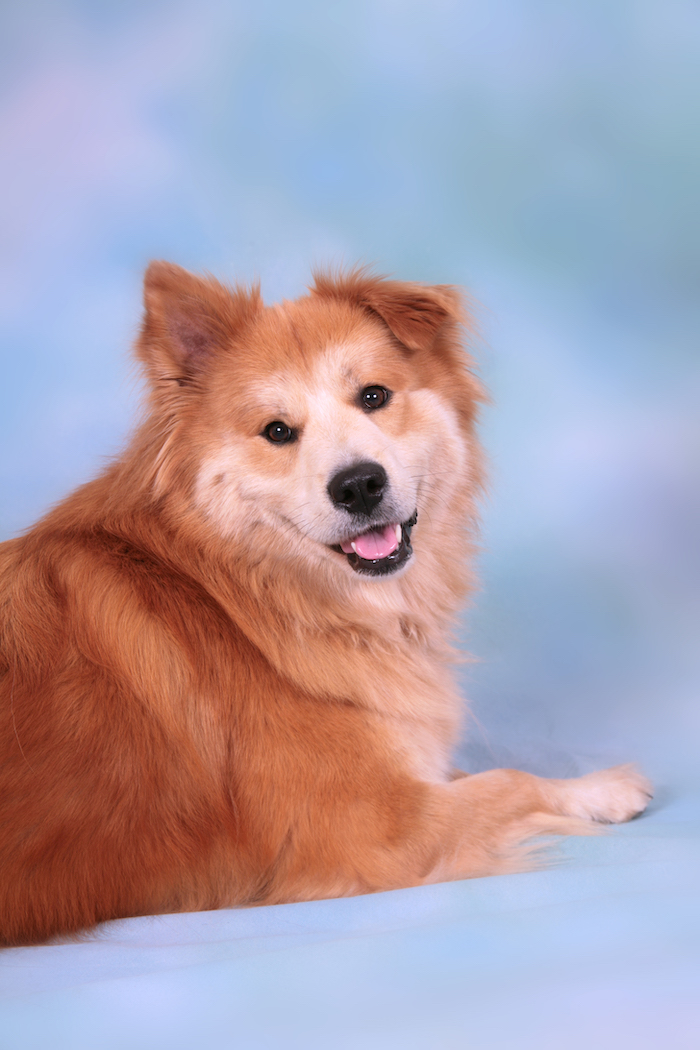
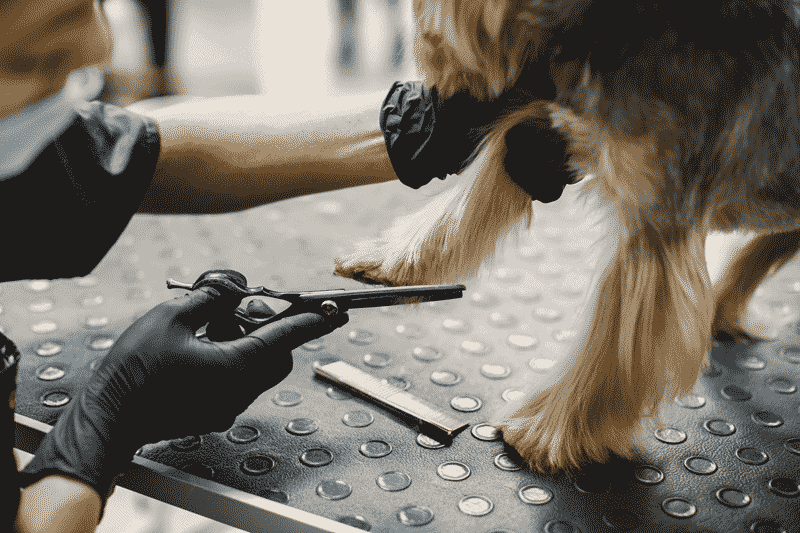
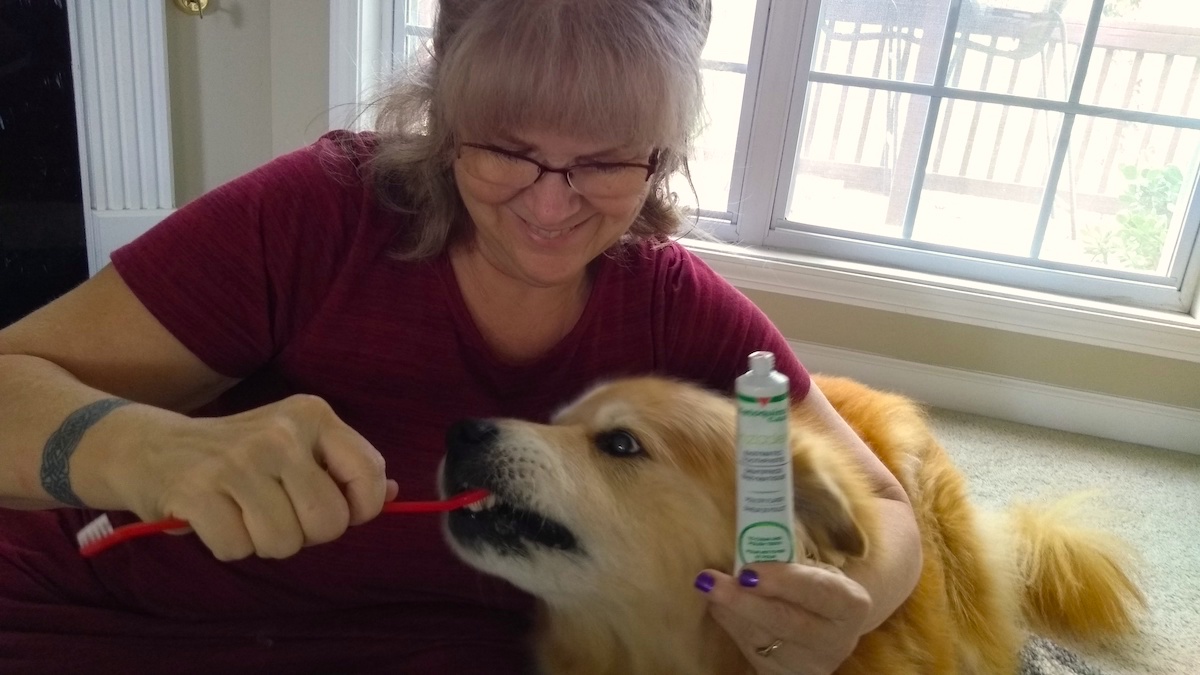

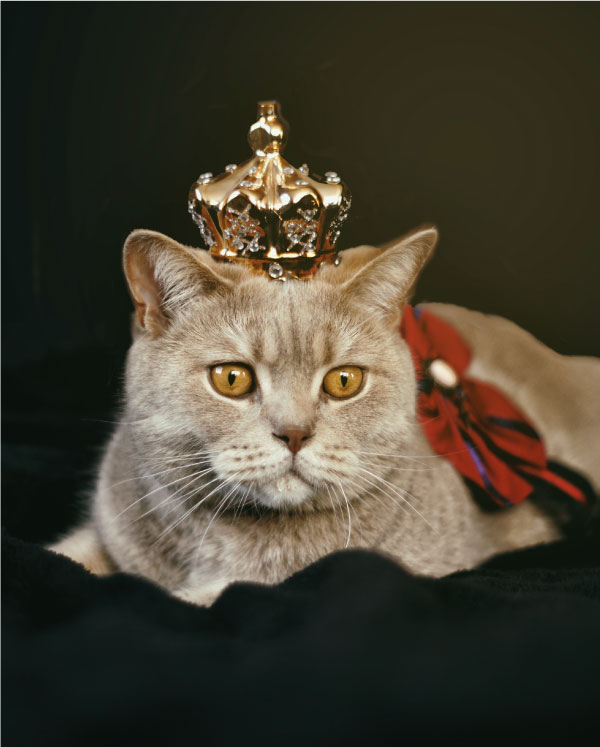
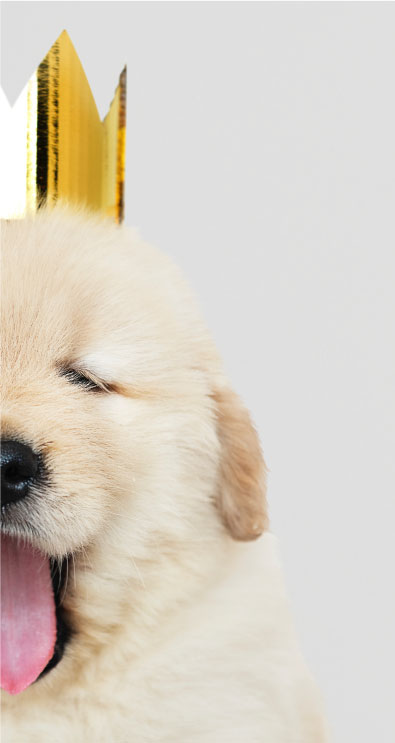
Great article I always have a hard time picking a brush, seeing each brush in use give me a better idea which one would work best for my pup
WondeRUFFul! That’s what we were hoping for. Happy brushing…
Nice review! These short videos are just what we need when discussing grooming tools with our 4-H Pet Rescue Clubs.
So pleased to hear that, and four paws up to you for working with the next generation of animal caregivers!
A bristle brush is best for dogs with short or wiry coats, and our pick in this category is the Greenbone Bamboo Pet Grooming Brush. Made with a sustainable bamboo handle and soft, natural bristles, this brush works to keep your short-haired dog’s coat soft and manageable without causing damaging to sensitive skin. It has an ergonomic handle for comfort, and at just over 3 ounces, is incredibly lightweight and easy to use.
Thanks so doggone much for the recommendation and for reading our blog 🙂 Both are appreciated!